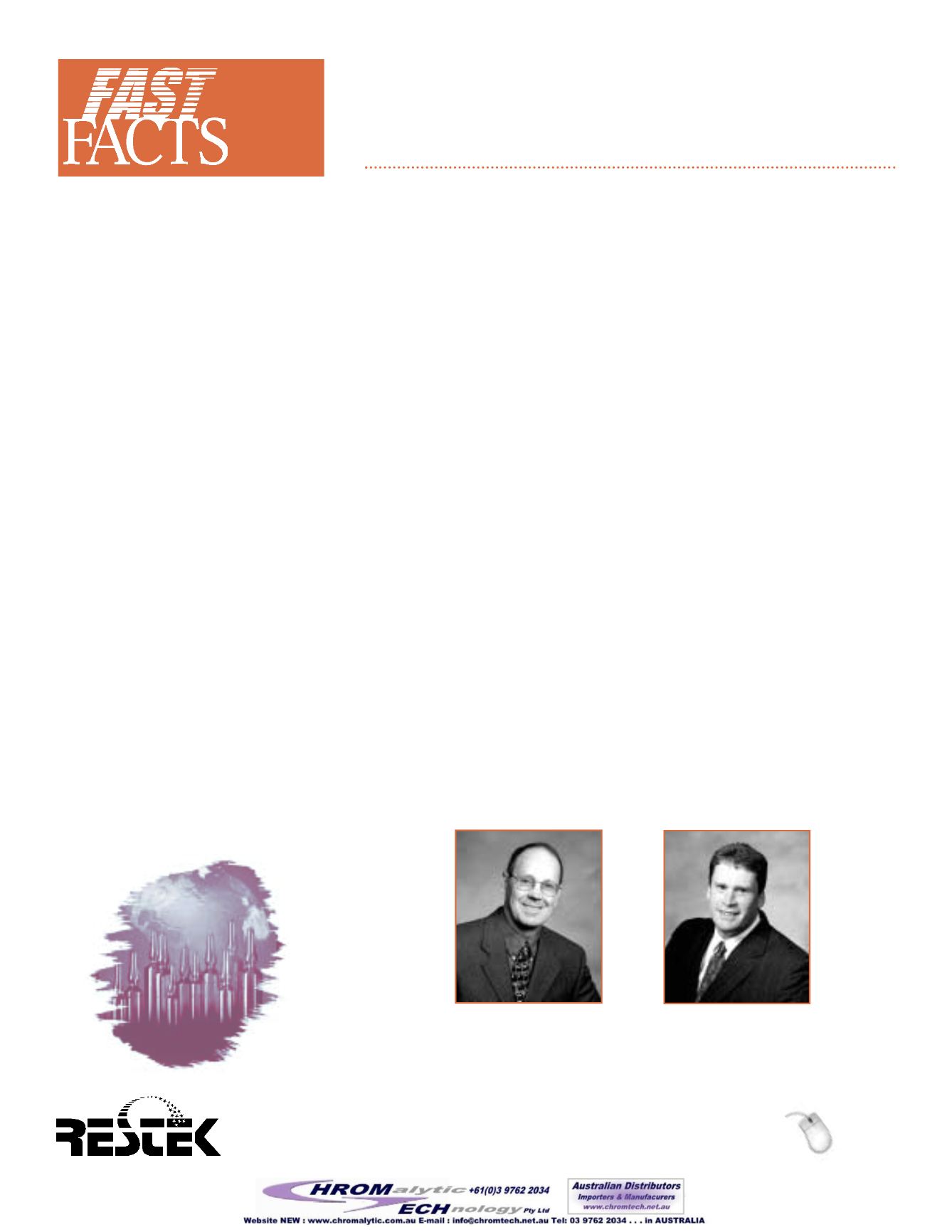
800-356-1688
814-353-1300
At-a-Glance
Product
Information
fromRestek
To help laboratories comply with and use
these analytical procedures, Restek has been
active in following the state guidance. Based
on our assembled knowledge of themethods,
our experienced chemists have a list of the
appropriate technical service tools andanalyt-
ical products to achieve success with these
methods. We offer quality chromatographic
columns, analytical reference materials, and
sample preparation products.
This comprehensive product listing contains
all the information you will need to quickly
set-up or reorder consumables for thesemeth-
ods. Please reference our latest product cata-
log or call 800-356-1688 or 814-353-1300,
ext. 3, for more information. Also, we would
be happy to provide a quote on any custom
consumable youmay need!
Regulatory and Analytical
Methodology Contact Information
TexasNatural Resources
ConservationCommission
PetroleumStorageTankDivision
MC: 133
P.O. Box 13087
12100 Park 35Circle, 78753
Austin, TX 78711-3087
Phone: (512) 239-2106
Fax: (512) 239-2177
State of Texas
USTMonitoring
✔
The latest TNRCC 1005/1006USTmethods used by Texas.
✔
Comprehensive product listing conveniently organized bymethod number.
✔
Easymethod set-up and reorder of consumables, including:
Gas chromatography columns and accessories,
Analytical referencematerials,
Sample preparation supplies,
Technical service.
Texas Natural Resource Conservation Commission (TNRCC) enforces the state and EPA
rules in assessment, monitoring, and closure of UndergroundStorageTanks (UST). In the
early 1990s TNRCC published the TNRCCMethod 1005, Revision 01 analytical method
for UST applications. Then, in 1996 theymodified themethod and releasedRevision 02;
thenmodified it again in 1998 andRevision 03was finalized in June 2001.
TNRCCMethod 1005, Revision 03 determines the total petroleum hydrocarbons (TPH)
(C6-C35) in solid and aqueousmatrices. TheGCmethod is used to separate theTPH into
two ranges (C6-C12, andC12-C28), and a third range (C28-C35)when applicable, based
on the boiling points of the hydrocarbons. It is based on liquid/liquid or liquid/solid
extraction and GC/FID analysis, and may be used in lieu of US EPAMethod 418.1 for
the analysis of TPHs. Compared with earlier versions, this final version now includes
heavier hydrocarbons in the range of C28 to C35. Data produced using Revision 03
should be reported to C35, unless the environmental medium of concern or suspected
source of TPH does not contain hydrocarbons greater than C28. Results from analyses
using earlier versions ofMethod 1005may not include data for C28 toC35.
TNRCCMethod 1006, draft version, was published inMay 2000 to guide the separation
andquantitationof aliphatic and aromatic fractions inpetroleum contaminated soil orwater
samples. This method uses silica gel fractionation to separate the aliphatic and aromatic
fractions.Themethod is applicable tohydrocarbons in thegasoline, diesel,motor oil range,
and commonly is used in conjunctionwithTNRCCMethod 1005 for the determination of
total petroleum hydrocarbons. TNRCC 1006method is not intended for the quantitation of
individual target analytes, such as benzene, toluene, naphthalene, or other aromatics. Those
target analytes are best determined usingEPAMethods 8021, 8260 or 8270.
Texas UST programmaintains aweb site at:
/
Texas LUST programmaintains aweb site at:
Ken Herwehe
Analytical ReferenceMaterials
Product MarketingManager
(814) 353-1300, ext. 2127
JoeMoodler
Analytical ReferenceMaterials
CustomStandards Group Leader
(814) 353-1300, ext. 2148


